Creating Social Handprints: Method and Case Study in the Electronic Computer Manufacturing Industry
Abstract
:1. Introduction
2. Materials and Methods
2.1. Social LCA, SO-LCA and SHDB
2.2. Goal and Scope
2.3. Life Cycle Inventory
2.3.1. Company System Model Data
2.3.2. Social Risks Information
- A trade or supply chain model, such as a global input/output model (we used GTAP V7 here);
- A worker hours model;
- Data on social risks and opportunities;
- An impact assessment method (social hotspots index).
2.4. Impact Assessment
2.5. Normalization
- The total inputs and outputs for a geographical given area over a given reference year (e.g., the impact of the US economy last year);
- The total inputs and outputs for a geographical given area over a given reference year on a per capita basis (e.g., the impact of an American last year).
- A normalized risk > 1 means a greater than average risk per dollar.
- A normalized risk < 1 means a lower than average risk per dollar.
3. Results
3.1. The Social Footprint
3.2. Social Hotspots
3.3. Normalization
3.4. Social Hotspots of Salient Risks
4. Discussion and Handprint Creation
4.1. Root Causes Identification
4.2. Social Handprint Calculation and Results
- Reduce US brand owner’s total supply chain social footprint significantly;
- Reduce the total supply chain child labor risk (footprint) by 45%;
- Reduce the total supply chain tox/haz risk (footprint) by 28%;
- Create a social handprint, by causing positive change both in the footprint of the brand owner and in the footprint of other companies.
4.3. From a Typical Company to a Specific One
- Modify the purchases amount and country trade share of the existing industry model;
- Become more ambitious and even more specific, i.e., start from internal expenditure data;
- Obtain the information of the next supply chain tier from suppliers.
5. Conclusions
Supplementary Materials
Author Contributions
Funding
Acknowledgments
Conflicts of Interest
References
- Goleman, D. Handprints, Not Footprints. Time Magazine, 2012. Available online: http://content.time.com/time/magazine/article/0,9171,2108015,00.html (accessed on 25 January 2019).
- Norris, G. A Framework for Comparing and Understanding Net Positive Goals. SHINE MIT. 2017. Available online: http://shine.mit.edu/publications-6 (accessed on 25 June 2019).
- Hellweg, S.; Milà, I.; Canals, L. Emerging approaches, challenges and opportunities in life cycle assessment. Science 2014, 344, 1109–1113. [Google Scholar] [CrossRef] [PubMed]
- Benoit, C.; Mazjin, B. (Eds.) Guidelines for Social Life Cycle Assessment of Products; United Nations Environment Programme and Society of Environmental Toxicology and Chemistry: Paris, France, 2009; Available online: http://www.unep.fr/shared/publications/pdf/DTIx1164xPA-guidelines_sLCA.pdf (accessed on 25 June 2019).
- Handbook for Product Social Impact Assessment. Roundtable for Product Social Metrics. 2018. Available online: https://product-social-impact-assessment.com (accessed on 25 June 2019).
- Chhipi-Shrestha, G.K.; Hewage, K.; Sadiq, R. ‘Socializing’ sustainability: A critical review on current development status of social life cycle impact assessment method. Clean Technol. Environ. Policy 2015, 17, 579–596. [Google Scholar] [CrossRef]
- Russo Garrido, S.; Parent, J.; Beaulieu, L.; Revéret, J.P. A literature review of type I SLCA—Making the logic underlying methodological choices explicit. Int. J. Life Cycle Assess. 2016. [Google Scholar] [CrossRef]
- Wu, S.R.; Yang, D.; Chen, J. Social life cycle assessment revisited. Sustainability 2014, 6, 4200–4226. [Google Scholar] [CrossRef]
- Benoît Norris, C. Data for social LCA. Int. J. Life Cycle Assess. 2014, 19, 261–265. [Google Scholar] [CrossRef]
- Benoit Norris, C. Social Life Cycle Assessment: A Technique Providing a New Wealth of Information to Inform Sustainability-Related Decision-Making. In Life Cycle Assessment Handbook: A Guide for Environmentally Sustainable Products; Curran, M.A., Ed.; Scrivener Publishing LLC: Beverly, MA, USA, 2012; pp. 433–452. [Google Scholar]
- Benoit Norris, C.; Norris, G.; Valdivia, S.; Ciroth, A.; Moberg, Å.; Bos, U.; Prakash, S.; Ugaya, C.; Beck, T. The Guidelines for Social Life Cycle Assessment of products: Just in time! Int. J. Life Cycle Assess. 2010, 15, 156–163. [Google Scholar] [CrossRef]
- Manhart, A.; Grießhammer, R. Social Impacts of the Production of Notebook PCs; Oko-Institut e.V.: Freiburg, Germany, 2006; Available online: https://www.prosa.org/fileadmin/user_upload/pdf/notebooksurvey_final_engl.pdf (accessed on 25 June 2019).
- Ciroth, A.; Franze, J. LCA of an Ecolabeled Notebook—Consideration of Social and Environmental Impacts along the Entire Life Cycle; Lulu.com: Berlin, Germany, 2011; Available online: http://www.greendeltatc.com/uploads/media/LCA_laptop_final.pdf (accessed on 25 June 2019).
- Ekener-Petersen, E.; Finnveden, G. Potential hotspots identified by social LCA—Part 1: A case study of a laptop computer. Int. J. Life Cycle Assess. 2013, 18, 127–143. [Google Scholar] [CrossRef]
- Benoit, C.; Aulisio, D.; Overraker, S.; Hallisey-Kepka, C.; Tamblyn, N.; Norris, G. Social Scoping Prototype Report Product Category 2: Laptop Computer; The Sustainability Consortium: Tempe, AZ, USA, 2011. [Google Scholar]
- Subramanian, K.; Yung, W.K.C. Modeling Social Life Cycle Assessment framework for an electronic screen product: A case study of an integrated desktop computer. J. Clean. Prod. 2018, 97, 417–434. [Google Scholar] [CrossRef]
- Wilhelm, M.; Hutchins, M.; Mars, C.; Benoit-Norris, C. An overview of social impacts and their corresponding improvement implications: A mobile phone case study. J. Clean. Prod. 2015, 102, 302–315. [Google Scholar] [CrossRef]
- Umair, S.; Björklund, A.; Ekener, E. Social impact assessment of informal recycling of electronic ICT waste in Pakistan using UNEP SETAC guidelines. Resour. Conserv. Recycl. 2015, 95, 46–57. [Google Scholar] [CrossRef]
- Responsible Business Alliance. Available online: https://www.responsiblebusiness.org (accessed on 25 June 2019).
- Ramchandani, A. Forced Labor Is the Backbone of the World’s Electronics Industry. The Atlantic, 28 Junuary 2018. Available online: https://www.theatlantic.com/business/archive/2018/06/malaysia-forced-labor-electronics/563873/ (accessed on 25 June 2019).
- Condliffe, J. Foxconn Is under Scrutiny for Worker Conditions. It’s Not the First Time. The New York Times, 11 Junuary 2018. Available online: https://www.nytimes.com/2018/06/11/business/dealbook/foxconn-worker-conditions.html (accessed on 25 June 2019).
- Locke, R.M.; Samel, H. Beyond the Workplace: “Upstream” Business Practices and Labor Standards in the Global Electronics Industry. Stud. Comp. Int. Dev. 2018, 53, 1–24. [Google Scholar] [CrossRef]
- European Coalition for Corporate Justice. French Corporate Duty of Vigilance Law Information Sheet. Available online: https://www.business-humanrights.org/sites/default/files/documents/French%20Corporate%20Duty%20of%20Vigilance%20Law%20FAQ.pdf (accessed on 25 June 2019).
- Shift and Mazars. UN Guiding Principles Reporting Framework. 2015. Available online: https://www.ungpreporting.org (accessed on 25 June 2019).
- Benoit Norris, C.; Norris, G.; Xiao, Y.; Murray, J. Human Rights Due Diligence with the Social Hotspots Database. In The Social Effects of Global Trade: Quantifying Impact Using Multiregional Input Output Analysis; Murray, J., Malik, A., Geshke, A., Eds.; Pan Stanford Publishing PTE: Singapore, Singapore, 2018. [Google Scholar]
- Martinez Blanco, J.; Finkbeiner, M.; Inaba, A. Guidance on Organizational Life Cycle Assessment; United Nations Environment Programme and Society of Environmental Toxicology and Chemistry. 2015. Available online: https://www.lifecycleinitiative.org/wp-content/uploads/2015/04/o-lca_24.4.15-web.pdf (accessed on 25 June 2019).
- Martínez-Blanco, J.; Annekatrin, L.; Ya-ju, C.; Matthias, F. Social organizational LCA (SOLCA)—A new approach for implementing social LCA. Int. J. Life Cycle Assess. 2015, 20, 1586–1599. [Google Scholar] [CrossRef]
- Benoit-Norris, C.; Aulisio Cavan, D.; Norris, G. Identifying Social Impacts in Product Supply Chains: Overview and Application of the Social Hotspot Database. Sustainability 2012, 4, 1946–1965. [Google Scholar] [CrossRef]
- Norris, G.A. Social impacts in product life cycles: Towards life cycle attribute assessment. Int. J. Life Cycle Assess. 2006, 1, 97–104. [Google Scholar] [CrossRef]
- US Department of Commerce, Bureau of Economic Analysis. Benchmark Input/Output Accounts; US Department of Commerce. Available online: https://www.bea.gov/industry/input-output-accounts-data (accessed on 25 June 2019).
- Yang, Y.; Ingwersen, W.; Hawkins, T.; Srocka, M.; Meyer, D.E. USEEIO: A new and transparent United States environmentally-extended input-output model. J. Clean. Prod. 2017, 158, 308–318. [Google Scholar] [CrossRef] [PubMed]
- Narayanan, G.B.; Walmsley, T.L. Global Trade, Assistance, and Production: The GTAP 7 Data Base; Center for Global Trade Analysis, Purdue University: West Lafayette, IN, USA, 2008; Available online: http://www.gtap.agecon.purdue.edu/databases/v7/v7_doco.asp (accessed on 25 June 2019).
- Tang, C.; Zhao, L.; Zhao, Z. Child Labor in China; Institute for the study of labor IZA: Bonn, Germany, 2016. [Google Scholar]
- United Nations Human Rights, Office of the High Commissioner. End of Visit Statement by the United Nations Special Rapporteur on Human Rights and Hazardous Substances and Wastes, Baskut Tuncak; OHCHR: Phnom Penh, Cambodia, 2015; Available online: https://www.ohchr.org/EN/NewsEvents/Pages/DisplayNews.aspx?NewsID=16639&LangID=E (accessed on 25 June 2019).

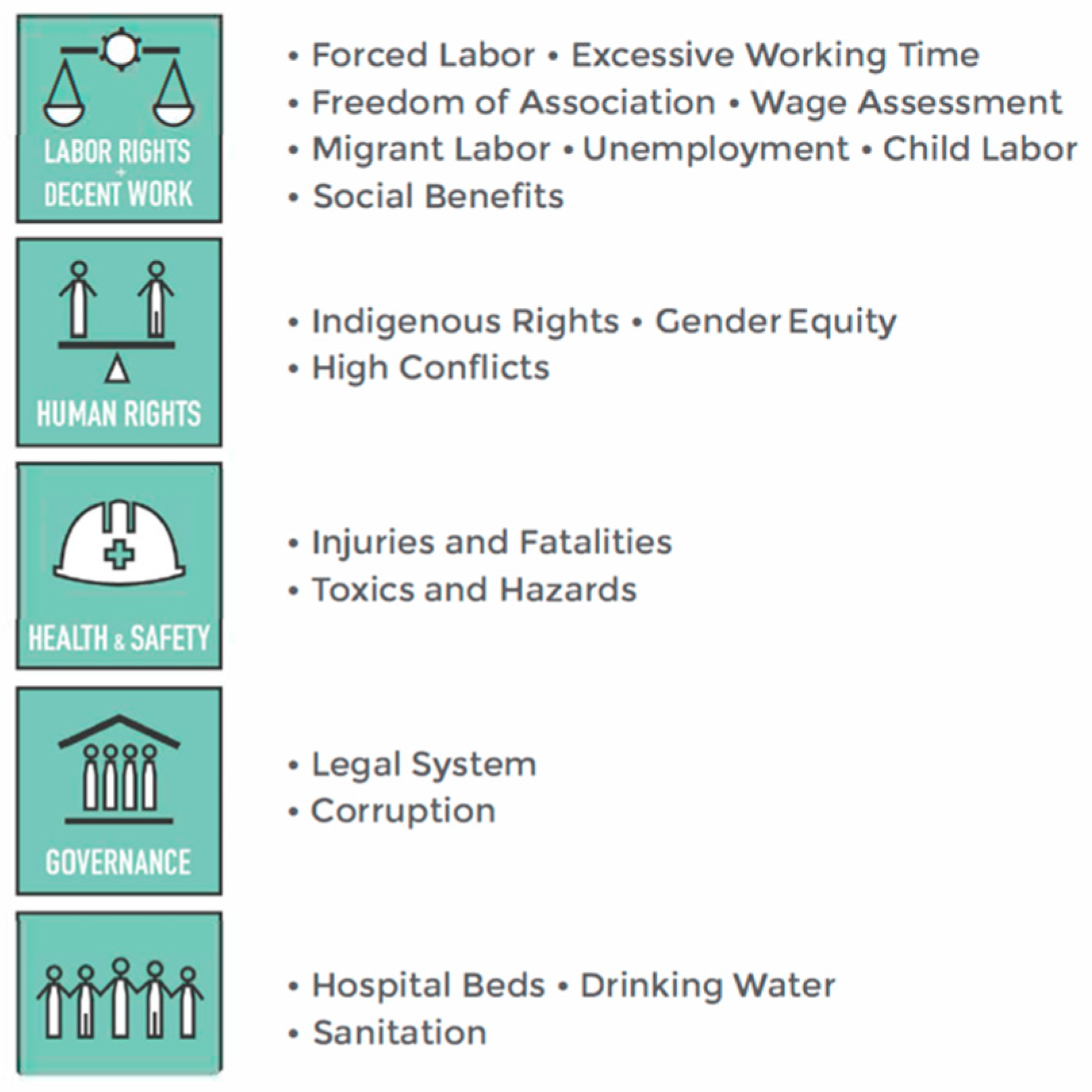

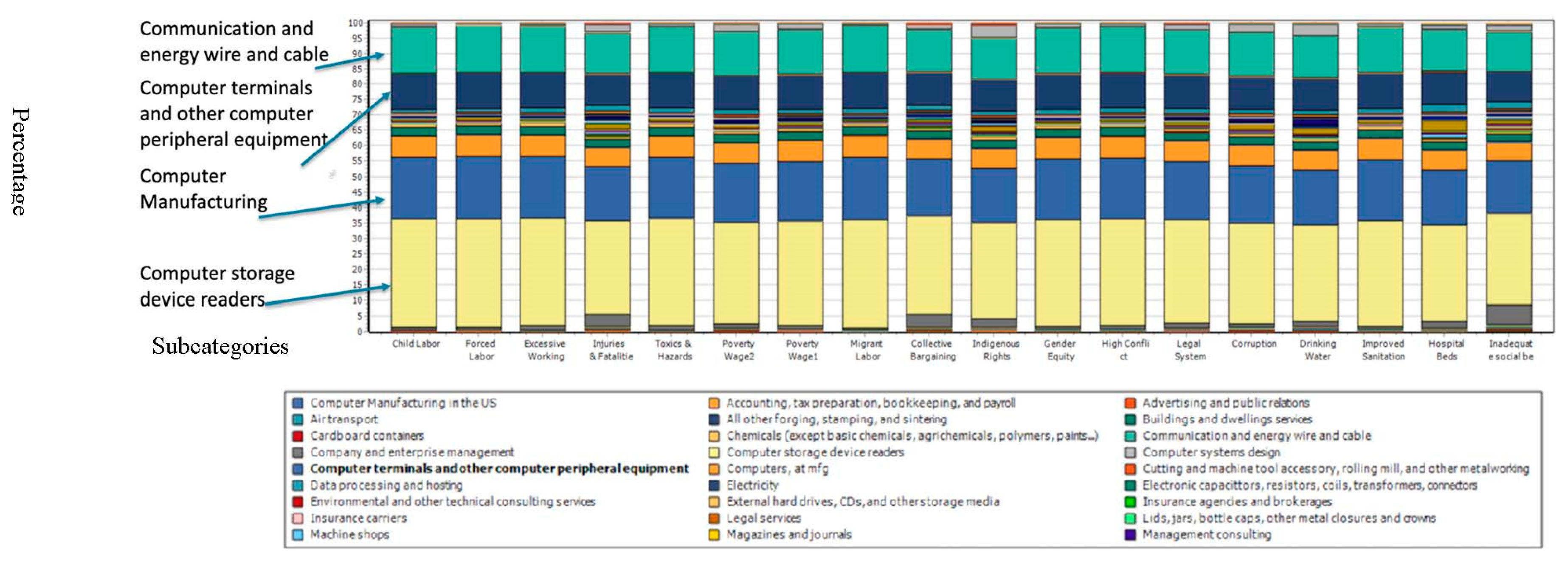
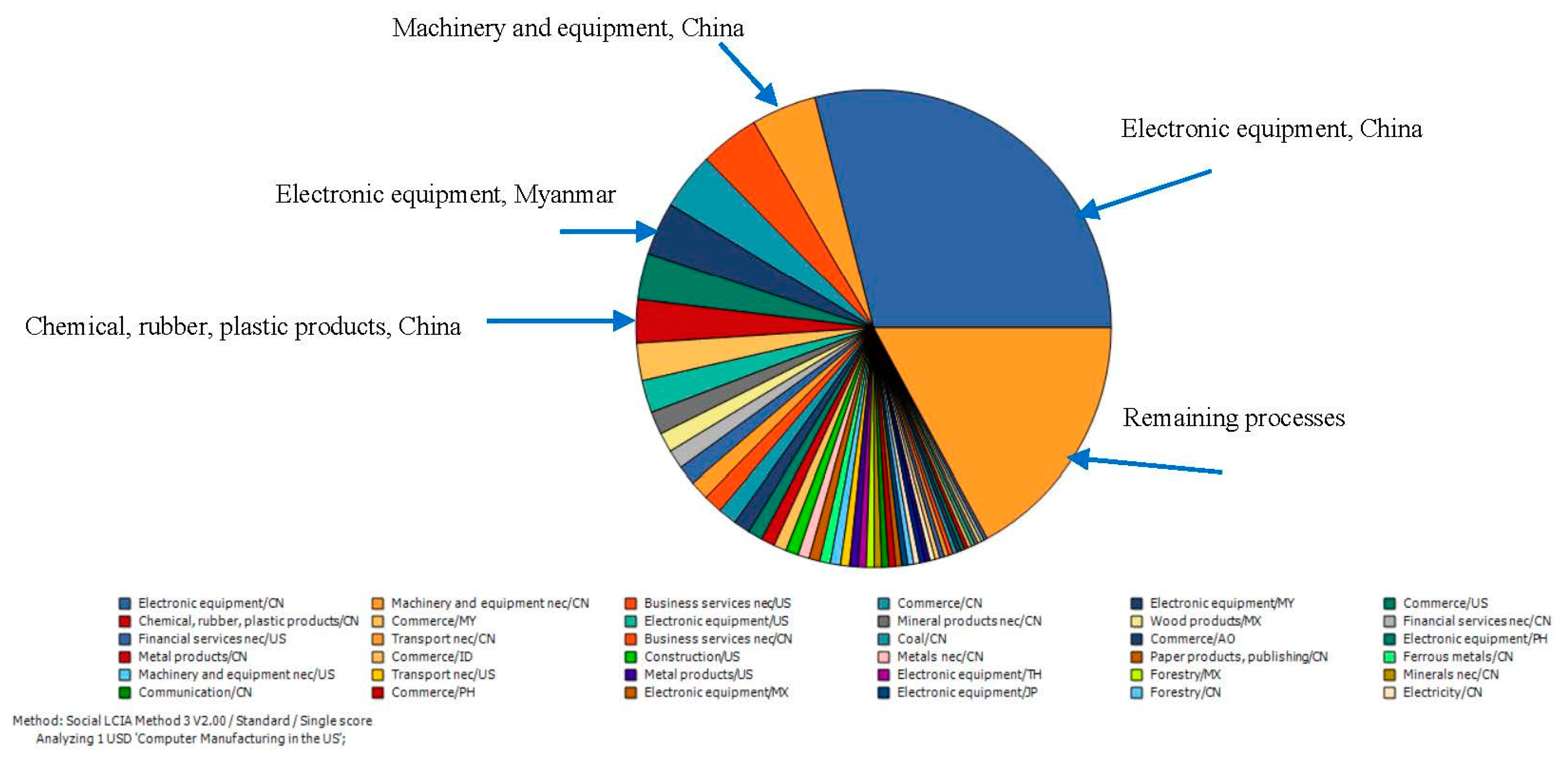
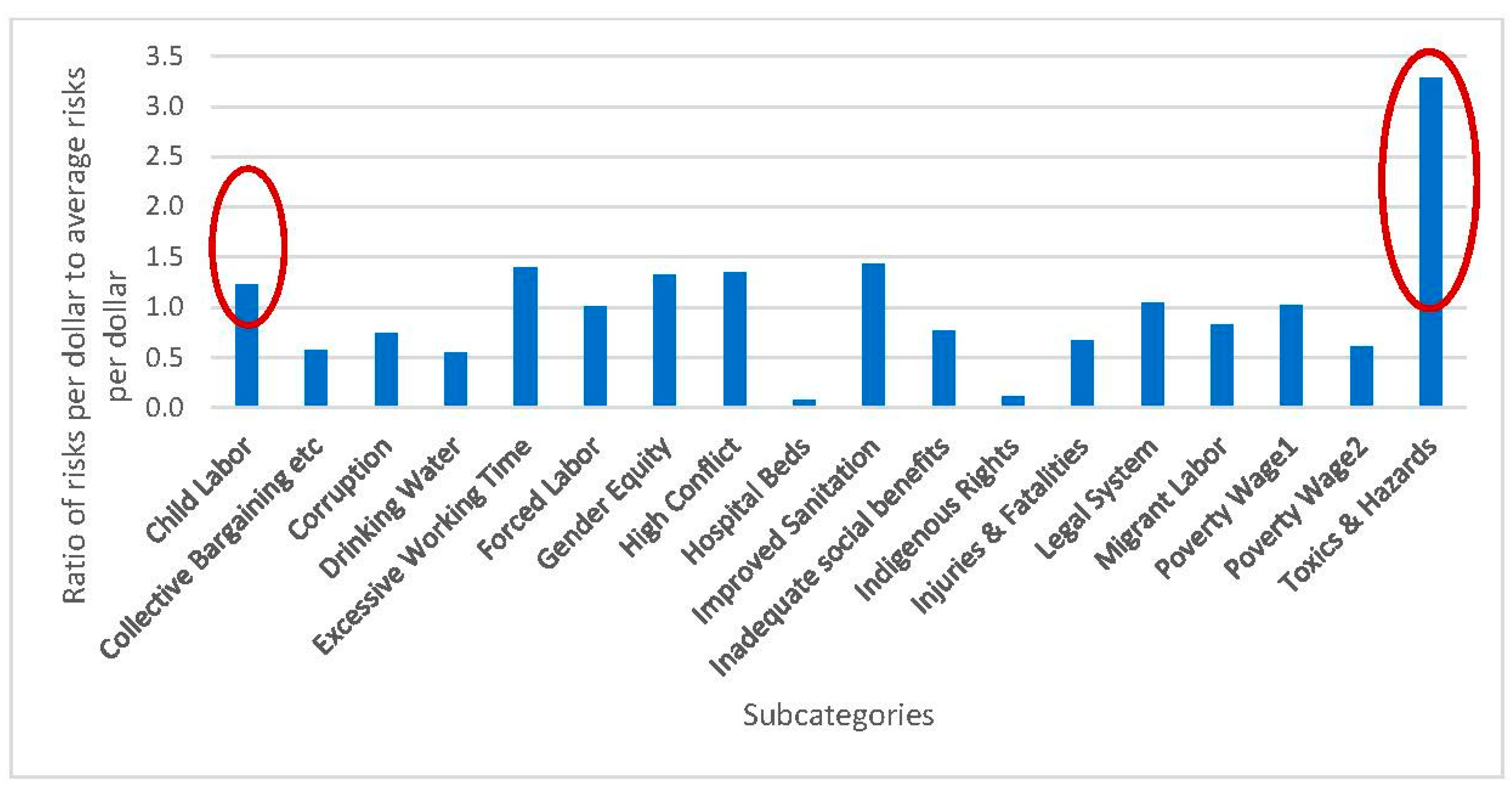
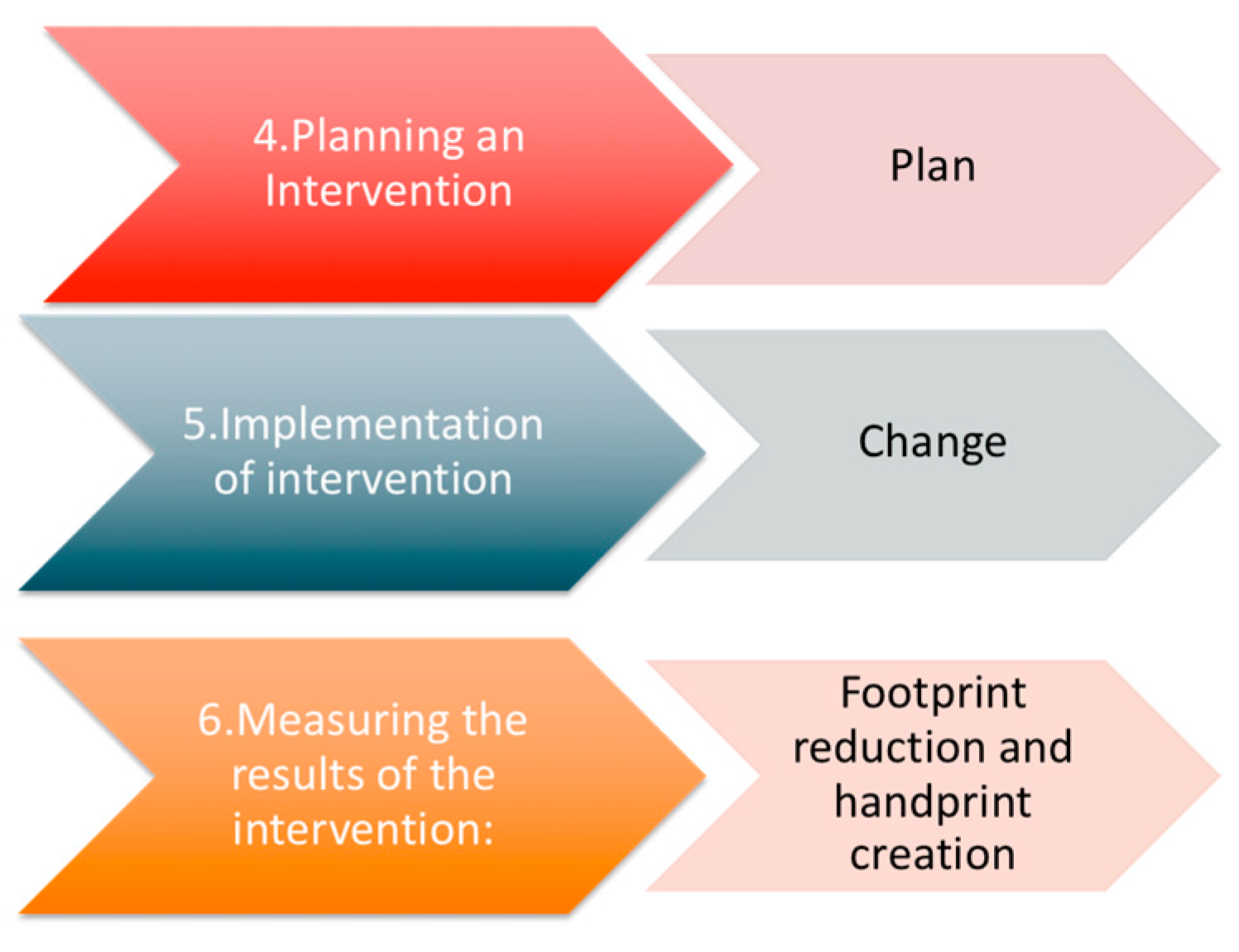
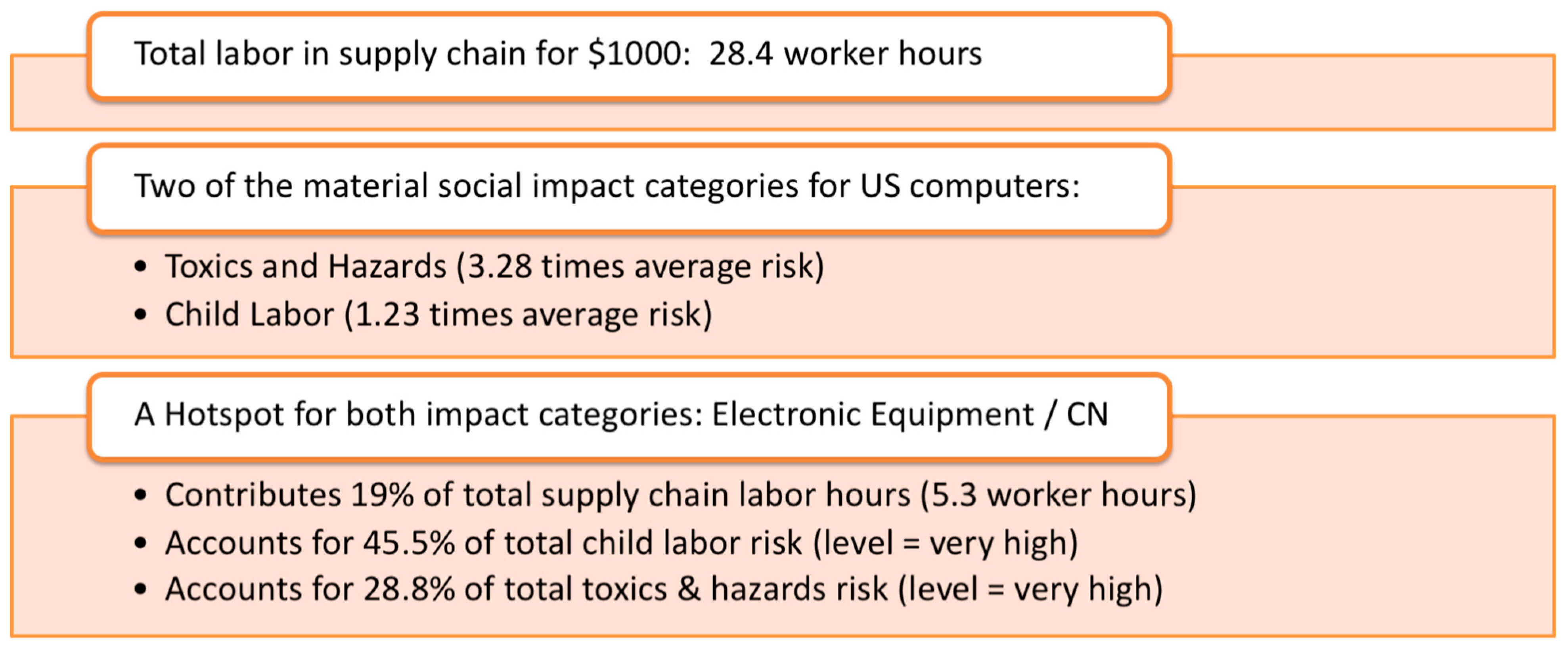
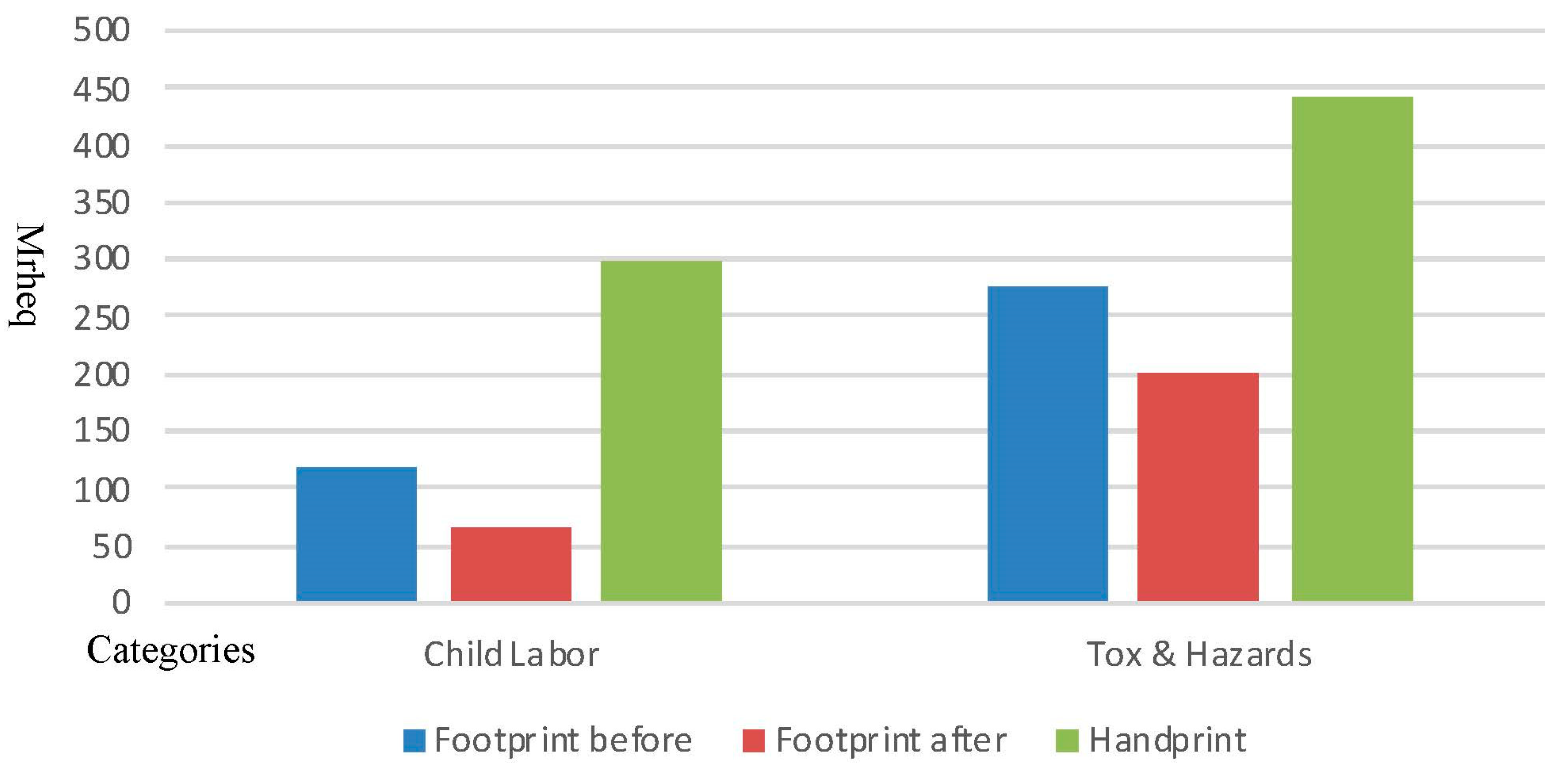
| Risk Level | Weight |
|---|---|
| Very High Risk | 10 |
| High | 5 |
| Medium | 1 |
| Low | 0.1 |
| Result Type | Result Outcome |
|---|---|
Overall Social Footprint
|
|
| Overall Social Hotspots individual production activity/country which contributes most to the risk (overall, by impact category or subcategory) |
|
| Salient Social Risks social impact subcategories that account for a greater share of the overall risk |
|
© 2019 by the authors. Licensee MDPI, Basel, Switzerland. This article is an open access article distributed under the terms and conditions of the Creative Commons Attribution (CC BY) license (http://creativecommons.org/licenses/by/4.0/).
Share and Cite
Benoit Norris, C.; Norris, G.A.; Azuero, L.; Pflueger, J. Creating Social Handprints: Method and Case Study in the Electronic Computer Manufacturing Industry. Resources 2019, 8, 176. https://doi.org/10.3390/resources8040176
Benoit Norris C, Norris GA, Azuero L, Pflueger J. Creating Social Handprints: Method and Case Study in the Electronic Computer Manufacturing Industry. Resources. 2019; 8(4):176. https://doi.org/10.3390/resources8040176
Chicago/Turabian StyleBenoit Norris, Catherine, Gregory A. Norris, Lina Azuero, and John Pflueger. 2019. "Creating Social Handprints: Method and Case Study in the Electronic Computer Manufacturing Industry" Resources 8, no. 4: 176. https://doi.org/10.3390/resources8040176
APA StyleBenoit Norris, C., Norris, G. A., Azuero, L., & Pflueger, J. (2019). Creating Social Handprints: Method and Case Study in the Electronic Computer Manufacturing Industry. Resources, 8(4), 176. https://doi.org/10.3390/resources8040176




